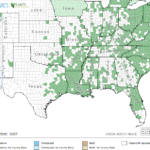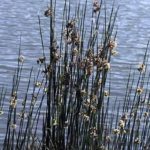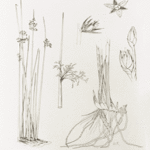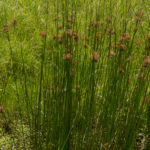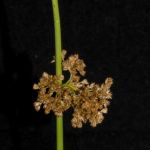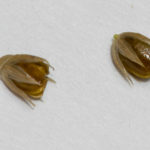Juncus effusus
USDA, NRCS. 2018. The PLANTS Database (http://plants.usda.gov, 28 March 2018). National Plant Data Team, Greensboro, NC 27401-4901 USA.
Illustration courtesy of University of Florida/IFAS Center for Aquatic and Invasive Plants. Used with permission.
What is Soft Rush?
Physical Characteristics
Flowers:
- Loose branching
- 30-100 flowers per cluster
- Brownish is color
Fruit:
- Dry
- Flat or slightly caving in at the end
- About the same size as the flower
Stem:
- Very short
- Thick
- Chestnut brown in color
Hollow Stem:
- Upright, straight
- 2-4 feet long
- 0.08-0.16 inches thick
- Very crowded
- Chestnut brown in color
- Bladeless
- 2-6 inches long
There are many species of rushes and they are difficult to identify without using detailed botanical keys.
Where Does it Grow?
Soft rush can be found in moist, sandy soil or the shallow fresh water of ponds and lakes, along streams, sloughs, and in marshes.
Pros and Cons of Soft Rush
Waterfowl, game birds, and song birds will consume seeds of soft rush (and other rushes). Submerged portions of all aquatic plants provide habitats for many micro and macro invertebrates. These invertebrates in turn are used as food by fish and other wildlife species (e.g. amphibians, reptiles, ducks, etc.). After aquatic plants die, their decomposition by bacteria and fungi provides food (called “detritus”) for many aquatic invertebrates.

